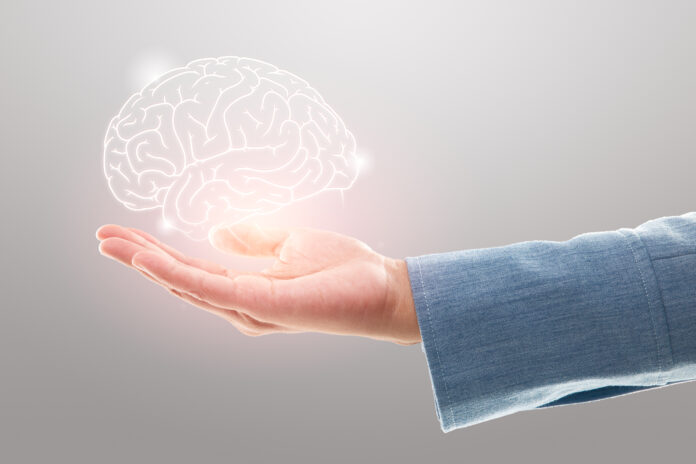I have often argued that psychotherapy changes your brain. Dreams serve as a springboard, because of the unique way that they randomly express the most basic stories contained in our neural networks. These narratives are so consistent and repetitive in their core themes that they ultimately give structure to even the chaotic brain activity of dreaming sleep. Neural network models demonstrate that interlinking networks of neurons can indeed give rise to interconnected ideas. Changing the strength of the neural connection alters the way in which ideas are interconnected. My colleague Eric Kandel has demonstrated that individual neural circuits can change in response to experience, a phenomenon that explains on a cellular level how the human brain learns in response to the experience of psychotherapy.
When many of these changes occur in particular neural circuits, parts of the brain responsible for particular representations can be permanently changed. Even adult brains are remarkably plastic, shifting dramatically in a manner consistent with how they are being used, suggesting that if we repeatedly attack ingrained and problematic representations of self and other, we can actually alter our relationship templates over time Stern’s work suggests both that early perceptual experiences drive the formation of perceptual experiences, drive the formation of prototypes and that humans are prewired to form relationships with others. And the role that early relationships play in literally forging the brain circuits for affective self-regulation highlights how closely our views of self and other are linked to the emotional timbre of those relationships. This interplay of attachment and emotion in early life is important, gradually teaching us to tolerate intense feeling-states and to regulate them ourselves. It is often disturbances in our early life experiences that result in problems of self-esteem, attachment, and dysregulation of painful moods that bring most patients to intensive psychotherapy.
It fascinates me that neurobiologists and psychoanalysts have arrived at the same term—structural change—for describing what happens in psychotherapy. Of course, neurobiologists define structural change as shifting neuronal connections, while psychoanalysts refer to changing structures of the mind such as the ego. Still, the parallel word choice is interesting. I wish psychoanalysts would adopt a neurobiological term—exuberant growth (which refers in neural science to the rapid sprouting of new neural connections)—to describe what they are trying to promote in psychotherapy.
As I think about it, what stands out about the stock in my dream is that it is a blue-chip, growth-oriented choice, one whose dividends almost certainly will increase over time. It is a “buy and hold” kind of investment; owning this stock requires a measure of determination, the willpower to stick with it through the market’s ups and downs. I recall reading recently that Johnson & Johnson has a DRIP, a direct reinvestment plan, which would allow me to purchase additional shares of the stock without a broker after my initial investment.
I begin to see that my dream is a metaphor for how I think about the process of psychotherapy. The purchase itself is like the investment in time, money, and energy that we make in psychotherapy. Indeed, the process of choosing a therapist involves literally choosing one’s company for the journey ahead. Changing your brain is a cell-by-cell process, psychotherapy really can substantially change your mind only over time. And while psychotherapy usually has its ups and downs, I believe you should experience fairly steady, readily apparent dividends along the way.As things progress in therapy, you begin to acquire additional insight to make changes on your own, without your therapist. Successful psychotherapy fosters the capacity for self-analysis that allows you to end psychotherapy yet continue to progress, to apply the self-understanding gained through working with your therapist to new life situations as they arise. Then you are able to afford your sports car and you are capable of enjoying it, too.
My model of mind and brain suggests several mechanisms through which psychotherapy leads to change. First, psychotherapy helps us to gain self-awareness by observing the flow of our ideas, and begin seeing the recurrent patterns to recognize the signposts that suggest we are going down a particular well-worn path. This self-recognition, known as insight, often happens relatively early in treatment as we work with our therapists to characterize the recurrent themes of the stories of our lives. Insight often is initially frustrating, because once we see what we are doing, why can’t we just cut it out? Our story synthesizer is so strongly ingrained in our cortex that it shapes the chaotic neural activity of REM sleep into dreams. Recognizing its main patterns is a necessary, but not sufficient, ingredient of change.
A second path to change in psychotherapy is the slow accretion of shifting connections between neurons as we find and challenge our usual operating modes in relationships. Our typical approaches to relationships come into focus as we examine how we relate to our therapists as our treatment unfolds. It is recognizable also in other important relationships in our lives, past and present. Examining, restructuring, then applying the patterns our story synthesizers usually resort to make our relationships stronger and more flexible as well.
This laborious process of rewiring the brain’s representations occurs alongside a third mechanism of change in psychotherapy: as we explore the ways in which we see our therapists through the lens of the past, we are also forming new relationships. Through the powerful corrective emotional experience of our relationships with our therapists, we remake our views of ourselves and others in relationships.
A fourth mechanism of change in psychotherapy arises from the fact that our lives continue while we are in treatment, giving us a chance to practice what we are learning in psychotherapy over and over again in situations outside the psychotherapy session. Like a piano student who thinks about and works on a particular piece that he has played and will play again for his teacher, the person in psychotherapy needs to practice on a daily basis. Practice is essential because it magnifies the impact of each lesson and gives us a better chance of retaining and using the things we are learning.
Finally, psychotherapy works because it involves our experiencing of intense and often painful affects as they arise when we explore the past and the present, in the context of our prototypes of ourselves and others. Seeing that we do not die or disintegrate when we experience intense anger, anxiety, sadness, shame, or excitement gives us a growing capacity to experience emotions more fully while feeling more capable of modulating our own emotional reactions. Therapy will help by making our capacity to experience joy and elation greater, and feel less ashamed and less inhibited. We will begin to experience relationships as less fragile. Overall, our capacity for an expanded range of affects and our growing ability to regulate them will help to make the tapestry of our lives richer, brighter, and more pleasurable.
Many therapists would like to pretend that with proper technique, any therapist can work with any patient. This clearly is not true. Choosing a therapist is more important than a dinner party or a blind date for many reasons, not the least of which is that psychotherapy lasts much longer. And while it’s true that you can’t pick your parents, you can choose your own therapist. You’ll want to pick who you snuggle up to carefully.
My model of psychotherapy also suggests that to really change, you have to focus on recognizing the same patterns or themes in situation after situation. This means work. Pattern recognition is at the heart of psychotherapy; the active focusing and connecting of ideas and emotions that it requires is a necessary step that directly affects the structure of your brain. If I am afraid of dogs and really want to get over my fear, I cannot just wait to randomly encounter dogs and hope that this will change my mind. I have to systematically face dogs in increasingly nearer, more intense ways until I am no longer afraid. The same goes for relationships. Meandering in your networks may be valuable in uncovering the patterns that they contain, but it is not enough to really change your mind.
Therapy is very different from our usual social modes of functioning, and it is uncomfortable at first.
The relative anonymity of the therapist helps to facilitate the evolution of the transference. Because we often don’t know exactly what our therapists really think, we can let the story lines implicitly contained in our neural networks become explicitly expressed in the relationships with our therapists. The popular, parodic version of this Freudian position of anonymity, which I call the therapist-as-Mount-Rushmore mode of psychotherapy, is one in which a patient continuously is met with silence on the part of the therapist. As a therapist, my goal is not to use the least possible number of words in any given session. Even if I decide not to answer a question a patient poses, I will often explain why I am not answering. I feel that the bond between patient and therapist is too important to let it be encroached upon by an overly silent analytic stance, which patients often perceive as withholding. After all, psychotherapy isabout relationships, not power struggles and mind games.
It is ironic that we believe we have little ability to change ourselves psychologically in the era of the personal trainer. I find that sometimes when I suggest that patients come to treatment more often, even those who can afford it, balk. But remember, four 45-minute psychoanalysis sessions amount to three hours a week—less than 3% of your time devoted to changing your mind. Many people spend more time than this at the gym acquiring washboard abs, and think nothing of it.
There are philosophical implications of the model I have proposed for how psychotherapy changes your brain as well. My model calls into question some fundamental ideas about human existence, such as the belief that we all are alone in our own skins. Given the idea that one person can function as a regulator of another’s brain chemistry and structure, can we really believe that we live and die so fundamentally separated from one another? With our new understanding of the brain, the once clear-cut lines between inside and self, versus outside and other begin to blur.
Psychotherapy allows us to have an intense relationship with another person, to construct a story about ourselves, to change our minds and brains. Psychotherapy provides a route through which one can achieve exuberant growth, structural change. But the power of the therapeutic relationship to effect change has implications for other relationships as well. I have seen patients in psychotherapy who form relationships with significant others that seem to spur their growth in new directions, often because each person seems to bring to the relationship a willingness to talk and work through issues that are troubling them.
The view of relationships and psychotherapy I have always proposed suggests also the crucial importance of treating children well, of doing our best to show them how to have mutually meaningful and respectful relationships with other people. As parents, we are the first to make up our children’s minds about how relationships work, teaching them indirectly through how we act with them and others. If learning to have a relationship is a function of implicit memory, more like riding a bicycle than memorizing state capitals, there is all the more reason to suspect that children will do as we do, not as we say.
In this high-tech age, our appreciation for the importance of human relationships is perhaps at an all-time low. Even as “personal communication” devices abound, and we all run around with beepers and cellular phones attached to one ear, sending faxes and e-mails, we probably have less time and energy for human contact and intimacy than ever before. Though the Internet, the World Wide Web, and the global economy make the world a smaller place, they do not necessarily make us closer to one another. We talk to one another’s answering machines and sometimes are disappointed when we reach a person directly. We are disgruntled to find we have to use a teller rather than a machine at the bank. As more people work from home, and as family ties dissolve, our sense of isolation and loss of community is likely to grow. Evidence for increasing rates of anxiety disorders and depression abounds, and researchers ask why. Is it not possible that the growing distance among people is itself responsible? Thinking back to the effects of separation on rats and the natural social structures of primates, might it not be that as evolving technology weakens our links to one another by limiting our needs for person-to-person, face-to-face contact, we have put ourselves at risk for anxiety and depression?























